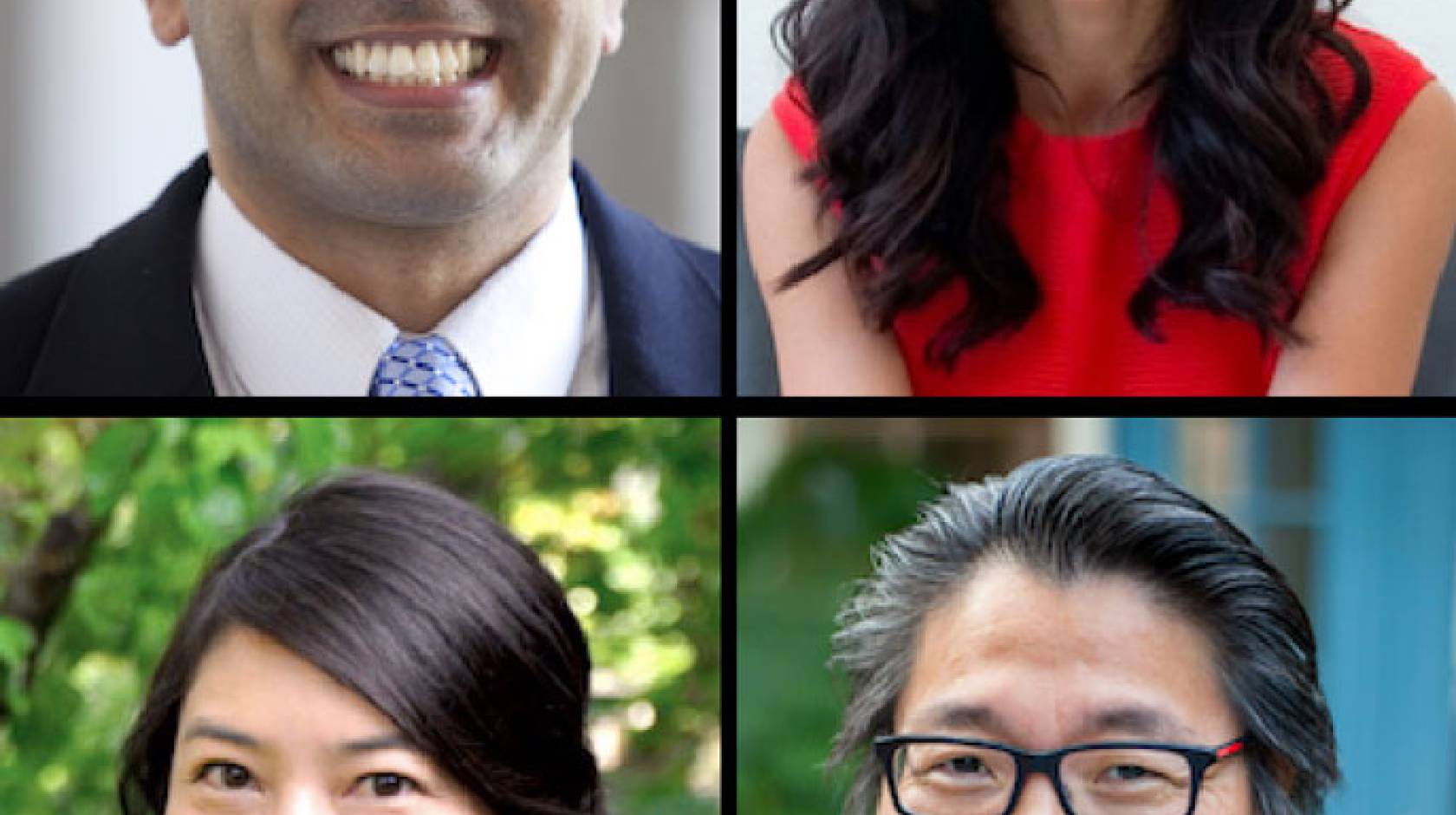Bettye Miller, UC Riverside

Asian Americans are the fastest-growing racial group in the United States, whose numbers are becoming increasingly influential in presidential elections. Despite their rapid growth and remarkable diversity, Asian Americans remain an understudied group whose experiences and attitudes are not reflected in national polls.
To address this gap, the National Science Foundation (NSF) has awarded a multi-campus team of researchers a $507,132 grant to undertake the most extensive study of Asian Americans to date.
The team includes Karthick Ramakrishnan, associate dean of the University of California, Riverside School of Public Policy and professor of public policy and political science; Jennifer Lee, professor of sociology at UC Irvine; Taeku Lee, professor of political science and law at UC Berkeley; and Janelle Wong, professor of American students and director of the Asian American Studies Program at the University of Maryland.
The study will expand upon the National Asian American Survey (NAAS), which was founded in 2008 and repeated in 2012. The NAAS is a scientific and nonpartisan effort to poll the opinions of Asian Americans and Pacific Islanders, and is the only nationally representative academic survey of this population. NAAS 2016 will focus on three core themes: (1) immigrant and second-generation incorporation; (2) race and ethnic relations and attitudes; (3) civic and political participation. Findings from the survey, which will be released in 2017, will prove an accurate portrait of the Asian American population, dispel myths, and correct misconceptions about the group.
“NAAS 2016 will allow researchers to study Asian Americans, who are often ignored in research projects because of their small and statistically unreliable sample sizes in other national and longitudinal surveys,” explained Ramakrishnan, the principal investigator on the NSF-funded project. “The results also will enable us to compare Asian Americans with three more thoroughly studied groups: African Americans, Latinos, and non-Hispanic whites.”
Becoming a priority
The researchers plan to conduct their study in 2016 and release the data to the public in summer 2017.
“The Asian American population is rapidly growing and changing, and with NAAS, we have a unique opportunity to study dynamics like intra-racial attitudes. Never before has a survey focused on how Asian ethnic groups view each other, and how they construct an Asian ethnic hierarchy,” said Jennifer Lee, co-principal investigator on the project.
Taeku Lee, another co-principal investigator, added, “Arguably the nation’s most dynamic and diverse population, the views and experiences of Asian Americans and Pacific Islanders remains largely relegated to the shadows. With data from this quadrennial project, the 2016 NAAS promises to shed critical light on the social, economic, and political life and civic engagement of AAPIs.”
“Funding from the National Science Foundation shows that research on Asian Americans is becoming more of a national priority,” said Janelle Wong, a co-principal investigator on the project.
Researchers will survey approximately 3,600 individuals representing the six largest U.S. Asian ethnic groups, who account for more than 80 percent of Asian American adults – Asian Indian, Chinese, Filipinos, Koreans, Japanese and Vietnamese. The telephone survey will be conducted in at least 11 languages, which is critical since more than 70 percent of Asian Americans were born outside the United States.
Participants will be asked about personal experiences and attitudes related to immigration to the United States, inter- and intragroup relations and attitudes, civic and political involvementparty affiliation, voting behavior, health and financial status, racial and ethnic identification, discrimination, stereotypes, beliefs about racial and class-based inequality, and affirmative action.
Rapid growth rate
Between 2000 and 2010, the Asian American population grew at a rate of 46 percent, compared to a 10 percent growth rate for the overall U.S. population. Asian Americans and Pacific Islanders continue to exhibit the fastest population growth rates, and now number over 20 million residents, or more than 6 percent of the U.S. population.
Fueling their growth is immigration. China and India are now the top sending countries for immigrants to the United States, moving ahead of Mexico. By 2065, demographers estimate that Asian Americans will comprise about 14 percent of the U.S. population. As a share of voters, Asian Americans have been the fastest-growing electorate over the last five presidential elections, increasing from 1.7 million voters in 1996 to 3.9 million by 2012.
Accompanying their growth in numbers is their growing diversity. Asian Americans comprise more than 20 distinct ethnic groups and exhibit greater socioeconomic diversity than any other U.S. racial group.
For example, while Indians, Chinese, and Koreans exhibit higher levels of educational attainment than all U.S. groups, including native-born whites, Cambodian, Laotian, and Hmong have lower rates of high school completion than African Americans and Latinos. Immigrants from India and China make up the majority of high-skilled visa holders in the U.S., and these groups not only bring much-needed skills, but also racial, ethnic, religious, and cultural diversity to the U.S., and its STEM and technology sectors. At the same time, Asian American immigrants also constitute a significant share of low-wage workers concentrated in the restaurant and personal-service industries.
These characteristics make the study of Asian Americans essential to our understanding of social, legal, and economic processes like immigrant and second-generation incorporation, inter- and intra-group attitudes, racial formation and change, and civic and political engagement, Ramakrishnan said

